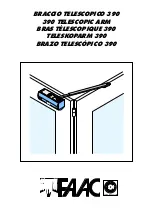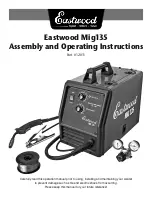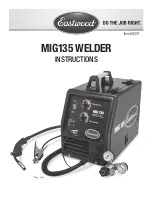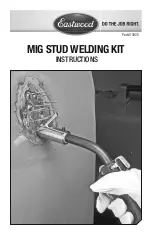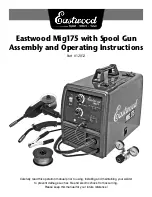
11
12
OPERATION
1. Setting the amperage control
The welder has an infinite output current control. It is capable of welding with 1.6mm,
2.0mm, 2.5mm and 3.2mm electrodes.
There is no golden rule that determines the exact amperage required for every situation.
It is best to practice your welds on scrap metal which matches the metals you intend
to work with to determine correct setting for your job. The electrode type and the
thickness of the work piece metal determine the amount of heat needed in the welding
process. Heavier and thicker metals require more voltage (amperage), whereas lighter
and thinner metals require less voltage (amperage).
2. Welding techniques
The best way to teach yourself how to weld is with short periods of practice at regular
intervals. All practice welds should be done on scrap metal that can be discarded. Do
not attempt to make any repairs on valuable equipment until you have satisfied yourself
that your practice welds are of good appearance and free of slag or gas inclusions.
2.1 Holding the electrode
The best way to grip the electrode holder is the way that feels most comfortable to
you. To Position the Electrode to the work piece when striking the initial arc it may
be necessary to hold the electrode perpendicular to the work piece. Once the arc is
started the angle of the electrode in relation to the work piece should be between 10
and 30 degrees. This will allow for good penetration, with minimal spatter.
2.2 Striking the arc
EXPOSURE TO A WELDING ARC IS EXTREMELY HARMFUL TO THE EYES AND
SKIN.
• Never strike an arc or begin welding until you have adequate protection.
• Wear flameproof welding gloves, heavy long-sleeved shirt, cuffless trousers, high-
topped shoes and a welding helmet or shield.
Scratch the work piece with the end of electrode to start arc and then raise it quickly
about 3.2 mm (0.32cm) gap between the rod and the work piece. See following picture
- E7014 70,000 PSI tensile strength used for high deposition and fast travel speeds with
light penetration
- E7018 70,000 PSI tensile strength used for out of position and tacking.
6. Selecting the proper electrode
There is no golden rule that determine the exact rod or heat setting required for every
situation. The type and thickness of metal and the position of the work piece determine
the electrode type and the amount of heat needed in the welding process. Heavier and
thicker metals required more amperage. It is best to practice your welds on scrap metal
which matches the metal you intend to work with to determine correct heat setting and
electrode choice. See following some helpful trouble shooting tips to determine if you
are using a correct electrode
1. When proper rod is used:
a. The bead will lay smoothly over the work without ragged edges
b. The base metal puddle will be as deep as the bead that rises above it
c. The welding operation will make a crackling sound similar to the sound of eggs frying
2. When a rod too small is used
a. The bead will be high and irregular
b. The arc will be difficult to maintain
3. When the rod is too large
a. The arc will burn through light metals
b. The bead will undercut the work
c. The bead will be flat and porous
d. Rod may be freeze or stick to work piece
Note:
Rate of travel over the work also affects the weld. To ensure proper penetration
and enough deposit of rod, the arc must be moved slowly and evenly along the weld
seam.
WARNING
Summary of Contents for CARiARC 140DB
Page 1: ......















